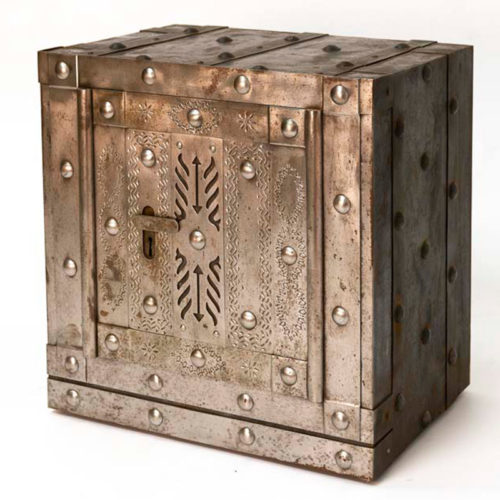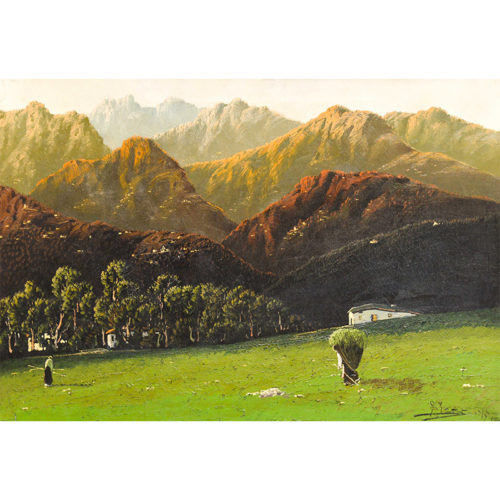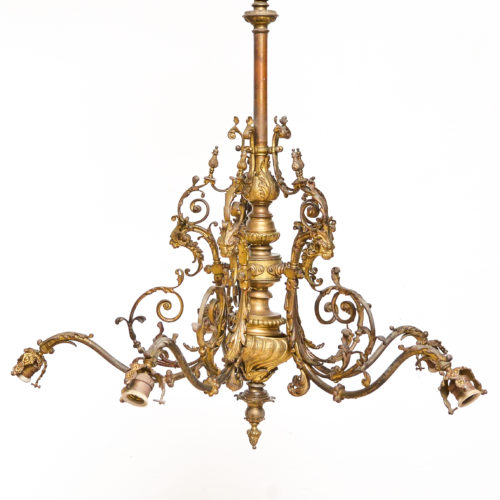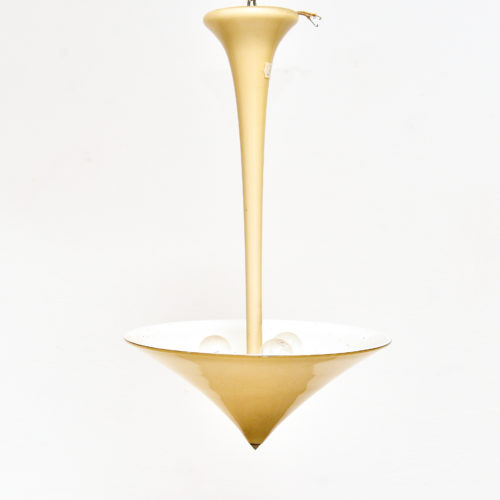“The Amazon on horseback” – Bronze sculpture by Augusto Rivalta (Alessandria 1837 – Florence 1925) dating back to 1901. Signed and dated on the base.
AUGUSTO RIVALTA (Alessandria, March 14, 1837 – Florence, April 14, 1925) was an Italian sculptor. After completing his studies at the Ligustica Academy, in 1859 he went to Florence for his specialization, attended the Duprè studio and the adherents to the Florentine current of the Macchiaioli. While settling in Florence, Rivalta maintains strong ties with Genoa. In this city, at the Staglieno Cemetery, there are many of his works and some of these are the Carlo Raggio Tomb, from 1872, the Drago Tomb from 1884, (for Giulio Cesare Drago, the donor of the railing of the Carignano bridge), the Pallavicino Tomb from 1892, the Ghigliani Tomb, etc. Since 1874 he has held the chair of Sculpture at the Florence Academy. A strong tendency towards a realistic approach is evident in his work. Among the many works by Rivalta that decorate Genoa, we must not forget the equestrian statue of Giuseppe Garibaldi, in Piazza De Ferrari, in front of the Carlo Felice theater and the Ligustica Academy. Especially in the plastic of the horse of this statue it is worth noting the realistic tendency and the technical skill of the modeling, characteristic of the Florentine school, which has dictates according to which the sculpture still passes through the laborious phase of the preparatory drawing. There are numerous commemorative statues of heroes of national unity. Rivalta performs, around the same time, two bronze statues for the Municipality of Sampierdarena, near the city of Genoa. Of these two statues, one in Piazza Monastero always depicts Giuseppe Garibaldi, this time standing. The other portrays the painter Nicolò Barabino, born in Sampierdarena, in the square of the same name. In the center of Genoa, in piazza Loading, the statue of Raffaele Rubattino is still his. Among his works is the bust of Christopher Columbus sent to Detroit (Michigan), from 1910. The subject of Christopher Columbus is also treated by one of his pupils, Francesco Caroni, who in 1892 painted the statue of Christopher Columbus seated and brooding, currently in courtyard of the Liceo Colombo in Genoa. The equestrian statue of Vittorio Emanuele II, originally placed in the Piazza Grande in Livorno and later moved in front of the nearby Government Palace, dates back to 1892. Another well-known work of Rivalta, a work completed at the end of his artistic career, are the sculptural groups of the Forza del Vittoriano in Rome: it is one of the four groups of Botticino marble statues on the pillars of the staircase, about 6 meters high. Around 1859 he volunteered to join the Carabinieri army, fighting for the liberation of Italy and later, returning to Florence, entered Giovanni Duprè’s studio. Around 1861 he won the competition for the monument to Cavour in Turin which was not built because the artist was considered too young, thus entrusting the task to Duprè. Professor of the Academic College of Fine Arts in Florence since 1870, in 1883 he won the competition for the equestrian monument to Vittorio Emanuele II in Livorno; for the same city he created the monument to Garibaldi (1889). Author of the monument to Raffaele Rubattino (1889) and Garibaldi (from a sketch of 1889 and inaugurated on October 15, 1893) in Genoa, for the city of Chiavari he created those to Mazzini, Garibaldi (1890) and Vittorio Emanuele II, while in 1897 he executed in Florence the one in Bettino Ricasoli. Together with Antonio Garella in 1901 he created the monument to Rossetti in Trieste. The Garibaldi of Sampierdarena dates from 1905 and for the monument to Vittorio Emanuele II in Rome he painted the allegorical statue depicting The Force (circa 1910). Author of funerary monuments, portraits and genre works, at the Italian Exhibition of 1861 he exhibited Wounded Zouave, participated in the exhibitions of the Promoter of Fine Arts of Turin from 1863 and at the Florentine Spring in 1922 he presented the bronzes “The first death”, “The holy family” and “Hercules” which overthrows the centaur, the latter already proposed in London in 1904. At the Turin Quadrennial in 1902 he presented “San Giovannino” and at the Venice Biennale in 1903 he exhibited “In Arcadia”. In 1915 he exhibited “Satyr and Nimph” at the San Francisco International. In the National Gallery of Modern Art in Rome are preserved the works G. B. Niccolini, from 1864, oriented towards the realist taste of Adriano Cecioni, Spinning top player, repeatedly reproduced, “Child joking with the goat”, “Return from the post office” and “Dancing Faun”. The bronze “Antaeus” is preserved in the Galleria d’Arte Moderna in Milan, while in the Lima museum “Baccanale” (1904). Other works of his are also in the Gallery of Modern Art in Florence. His son Carlo (1887–1941), a sculptor, was his pupil.
Period: 1901
Measurements: H 40 x W 44 x D 54 cm










